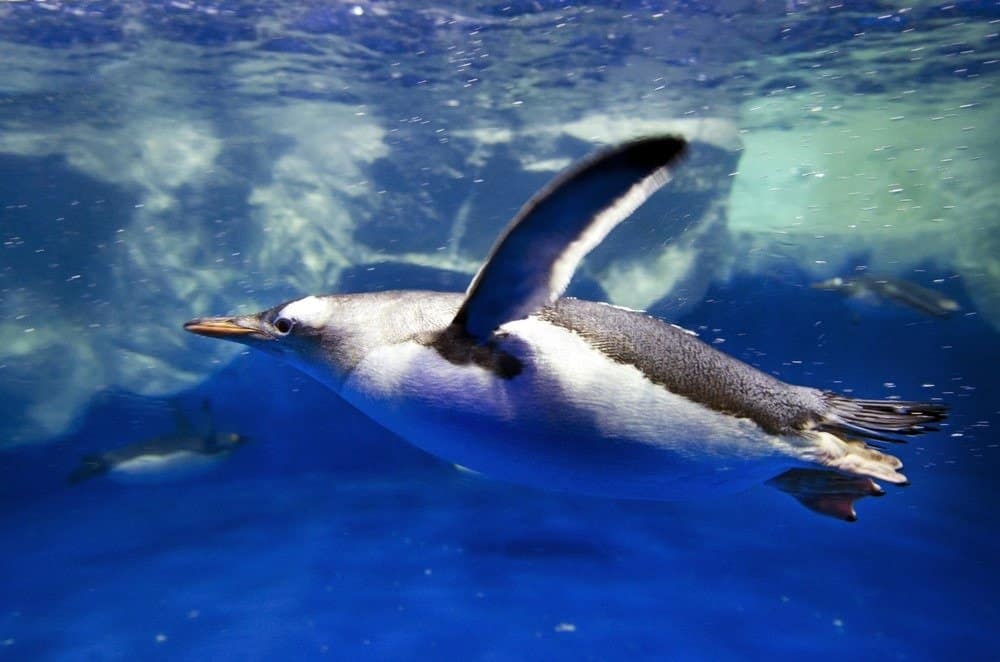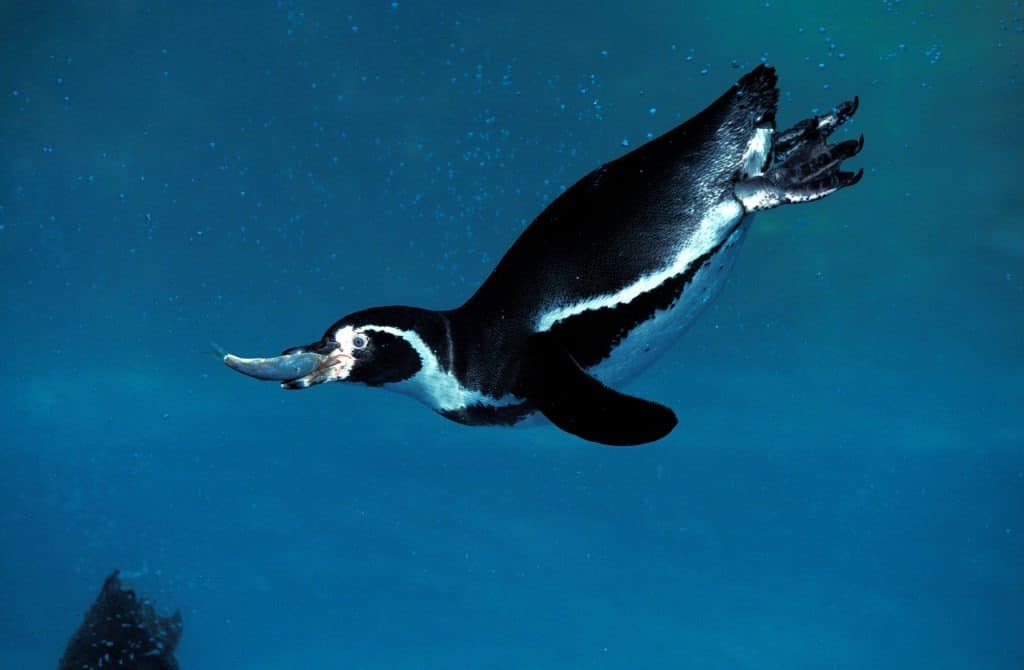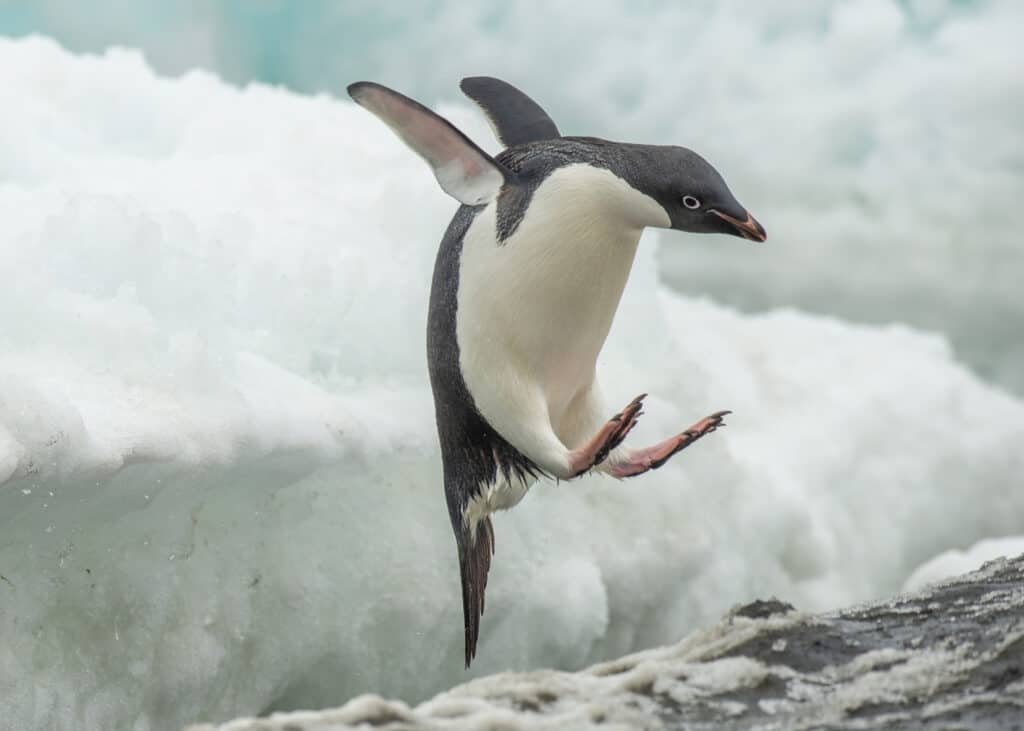Penguins are some of the most fascinating creatures on Earth. These flightless birds have evolved unique adaptations that allow them to thrive in some of the harshest environments on the planet, including the frigid waters of the Southern Ocean. One of their most remarkable adaptations is the ability to hold their breath for extended periods while diving. This article will explore how penguins hold their breath, the incredible adaptations that enable them to survive underwater, and how they use their diving abilities to hunt for prey.
Penguins’ Adaptations for Underwater Life
Penguins are great swimmers and can swim fast underwater because they are suited for life in the water. However, do you know how they manage to hold their breath during diving? This is possible due to physical and structural changes in their body.
To help them dive, penguins have some essential adaptations. They can slow down their heart rate, which lowers their oxygen use and lets them hold their breath longer. Their muscles have lots of myoglobin, so they can store oxygen and use it while they dive. They can also store oxygen in their lungs while underwater, which helps them keep using oxygen during long dives.
Another adaptation that helps penguins to survive in the water is their feathers. Penguins have a unique layer of densely packed feathers that provide excellent insulation in cold water. These feathers also help to reduce drag and enable penguins to move more efficiently through the water.

Penguins are great underwater swimmers.
©ChameleonsEye/Shutterstock.com
How Long Can Penguins Hold Their Breath Underwater?
Different penguins can hold their breath for varying amounts of time, with some holding it for several minutes and others even longer. They can dive to depths of up to 610 meters, equivalent to two Empire State Buildings stacked on top of each other!
Emperor Penguins, the largest species of penguins, can hold their breath for up to 30 minutes while diving. The progressive feat is made possible by their adaptations for diving. They can slow their heart rate and store oxygen in their muscles and lungs.
King Penguins, another species of penguin, can dive to depths of up to 300 meters (984 feet) and hold their breath for up to 7 minutes, can dive to depths of up to 300 meters and hold their breath for up to 7 minutes. Adélie Penguins, a smaller species, can dive to depths of up to 170 meters (557 feet) and hold their breath for up to 4 minutes.
Interestingly, some penguin species can hold their breath longer when not actively swimming. For example, during periods of inactivity, some penguins are known to enter a state of “torpor,” in which their metabolic rate decreases, allowing them to conserve energy. In this state, they can hold their breath for more extended periods of time, up to 30 minutes in some cases.

Emperor Penguins, the largest species of penguins, can hold their breath for up to 30 minutes while diving.
©Dennis Stogsdill/Shutterstock.com
The Physics of Penguin Diving
Penguin diving is not only impressive for its duration but also for its speed and efficiency. When penguins dive, they use their flippers to generate lift and their streamlined bodies to reduce drag. Additionally, they can adjust the air volume in their lungs to change their buoyancy and maintain a constant depth. These adaptations allow penguins to dive quickly and efficiently, catching prey and avoiding predators.
However, the physics of diving can also be challenging for penguins. When they dive, they experience pressure changes that can harm their bodies. To avoid injury, penguins have evolved several adaptations that allow them to regulate their air spaces and adjust to changes in pressure. For example, they can close their nostrils and flatten their feathers to reduce the volume of air in their body and prevent injury.

Penguin diving is not only impressive for its duration but also for its speed and efficiency.
©takmat71/Shutterstock.com
How Penguins Use Their Diving Abilities to Hunt Underwater
Penguins are not just impressive divers; they are also skilled hunters. They rely on their diving aptitude to hunt for fish, squid, and krill, which comprise most of their diet. When hunting, penguins use a technique called “porpoising,” which involves jumping in and out of the water in a series of rapid dives. This technique allows them to cover more ground and search for prey more efficiently.
Once penguins have located their prey, they use their streamlined bodies and powerful flippers to chase and catch their food. The depth to which penguins can dive varies depending on the species and the individual. Factors influencing their diving abilities include size, age, sex, and prey availability. Because some penguin species can dive to depths of over 1,640 feet, they can easily hunt for prey that other marine animals cannot reach.
Interestingly, some penguin species have been observed using cooperative hunting techniques to catch prey. For example, in Adélie Penguin colonies, penguins have been observed working together to herd schools of fish towards the shore, where they can be more easily caught.

Penguins rely on their diving aptitude to hunt for fish, squid, and krill, which comprise most of their diet.
©slowmotiongli/Shutterstock.com
The Threats Facing Penguins
Several factors, such as climate change, overfishing, and habitat loss, threaten penguins’ survival. Climate change is causing sea ice to melt and changing the prey species’ distribution, which is concerning. Overfishing is a significant threat as it can decrease prey availability for penguins and other marine animals. Human activities like fishing and oil drilling that cause habitat loss can also disturb penguin colonies and lead to population declines.
Conservation Efforts
Despite the threats facing penguins, there is still hope for their survival. Many organizations are working to protect penguin populations and their habitats. For example, some groups are working to reduce overfishing and implement sustainable fishing practices. Others are working to reduce carbon emissions and address the impacts of climate change. Additionally, some organizations are working to establish protected areas for penguins and other marine animals.
The Importance of Penguins in the Ecosystem
Penguins play a vital role in the marine ecosystem. They are a crucial part of the food web and serve as prey for various predators, including leopard seals and killer whales. Additionally, penguins transport nutrients from the ocean to land through their guano, fertilizing the soil and supporting vegetation growth. They also help to control the populations of small fish and crustaceans that they prey on, which helps to maintain a balanced ecosystem.
However, penguin populations are threatened by various factors, including climate change, overfishing, and habitat loss. As the oceans warm, prey availability for penguins is likely to decline, which could impact their survival ability. Additionally, human activities such as fishing and oil drilling can disrupt penguin habitats and lead to population declines.
With the help of organizations and governments, we can protect penguin populations and their habitats. By reducing carbon emissions, implementing sustainable fishing practices, and establishing protected areas, we can help ensure these amazing animals’ survival.

Several factors, such as climate change, overfishing, and habitat loss, threaten penguins’ survival.
©Benny Cottele/Shutterstock.com
Conclusion
We must take action to protect penguins and their habitat so that future generations will be able to experience and appreciate these amazing creatures. Conservation initiatives such as reducing overfishing and sustainable fishing practices, reducing carbon emissions, and establishing protected areas for penguins can help ensure their long-term survival.
Penguins are critical to the marine ecosystem and play a fundamental role in transporting nutrients from the ocean to land, controlling prey populations, and providing food for predators. Without their presence, the delicate balance of the marine ecosystem would be severely disrupted. We must take responsibility for our actions and ensure that these marvelous birds remain a part of the environment for generations to come.
By taking action now, we can create a brighter future where penguins continue to thrive. If we can commit to preserving their habitats and ensuring their survival, we will be able to enjoy the wonders of these incredible creatures for years to come.
The photo featured at the top of this post is © David Herraez Calzada/Shutterstock.com
Thank you for reading! Have some feedback for us? Contact the AZ Animals editorial team.






